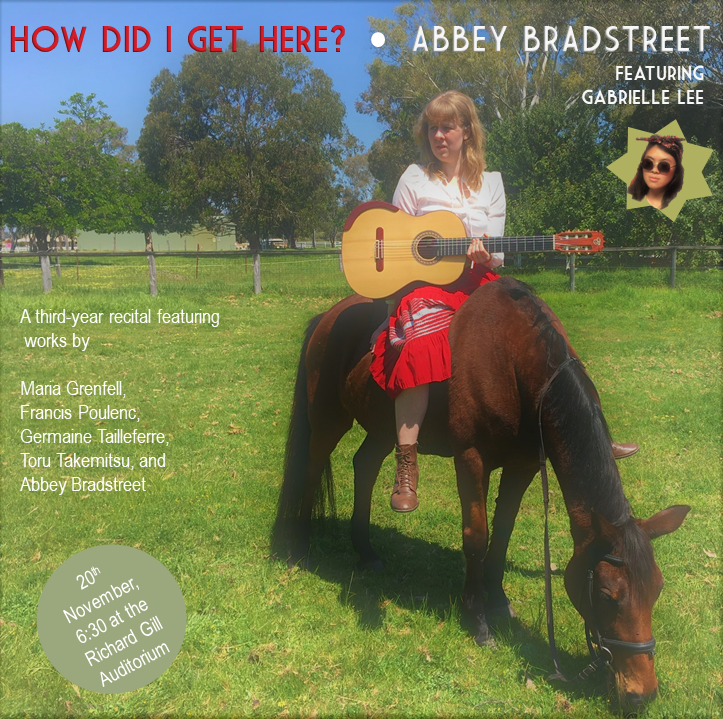|
Less than two months to go before my first recital at WAAPA, and I'm a bundle of nerves and intense motivation, which is probably the perfect combination. As other assessment requirements start to drop off, I'm finding more and more time to focus on the things I need to focus on. Thank goodness!
My rep is looking like this so far (in reverse order): Di Primavera by Maria Grenfell All in Twilight by Toru Takemitsu Sarabande by Francis Poulenc Guitare by Germaine Tailleferre; and ...darkness has not overcome... by me! The last is a work in progress, of course, but its starting to take shape. There's a lot of music already in the recital, so it can't be too long. It's actually a solo work for guitar and looper, so it will be a lot of fun to perform. Takemitsu's All in Twilight presents the greatest challenge. The shifts my hand has to overcome are a bit trickier than I'm accustomed to! I've asked around for advice, though. Slow practise is the key, and then what you do slowly is up to you. I've tried visualising the shift in my mind before I do it, and it sometimes works. My favourite practise technique, however, is practising one finger shifting at a time, then adding one, then adding another, then trying a different combination, then adding another finger...until I can go from one shift to another without any difficulty. Haven't quite reached the 'without any difficulty' level for most of the shifts, but they'll get there. I hope my recital will be quite atmospheric, as all the repertoire is. This is my musical focus during practise, and I have to remind myself that all technical hurdles have to be overcome for that very end.
0 Comments
I honestly love working with dancers, evidenced by the fact I am now taking on my third collaboration for the year. After shooting the choreographer some demos of 'looping fun' I'd made a few months back, and a quick meeting outlining what ideas she had for the music, I had a pretty good idea of what she wanted.
I'm not so familiar with DAWs yet, and I find it easiest to do one take of my music, recorded through the looper to the DAW. In some ways its a slower process, but as a performer (predominantly), I find this process the most organic. So its one take after the other, recording a bit, sending her a demo, recording some more, adding layers that I think will work at different times, sending her another demo. Bit by bit it starts to solidify into a piece in my mind, with structure and direction. At some point I jot this down, diagrammed in a linear way to show the layers as they're added. It helps me to remember what I intend to do in the polished takes. Unlike improvising with a looper live, this requires more intention, less time spent noodling and experimenting, so I need a clear guide. Finally, I feel I'm ready to record the take. It was more of a hit than the initial demos, which is positive. She does want a violin on top of the guitar stuff too, though. This requires some outside help. I have a friend of mine do the recording of a violaist improvising over the guitar looping, with our suggestions helping to frame what sorts of things she should do whilst improvising. We've almost got the finished product, but I'm pretty happy with the results. Even better, so is the dancer. She's probably more ecstatic than I am! Well, I suppose that's what its all about. |
Archives
June 2020
Categories |

 RSS Feed
RSS Feed
